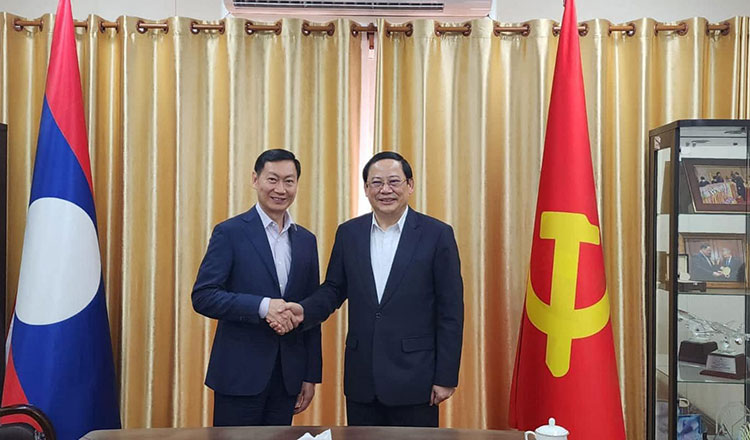
Cambodia and Laos have reiterated their committment to cooperate in the energy sector ahead of the planned visit by Prime Minister Hun Manet to Vientiane in the near future.
This came as Keo Rattanak, Minister of Mines and Energy, held a meeting with Sonexay Siphandone, Prime Minister of Laos, during his visit to the country on Saturday.
With the launch of a new 500-kilovolt electricity transmission line linking a power substation at a village in the southern Champasak province of Laos to the border area of Cambodia last year, the energy ties between the two nations have scaled new heights.
As part of efforts to meet the growing demand for energy from the rapidly expanding economy, Cambodia imports around 25 percent of its power requirement from countries such as Laos, Vietnam and Thailand.
From Laos, Cambodia currently imports around 445 MW, and the power trade is expected to reach 6,000 MW by 2030.
The Kingdom generates electricity from hydropower dams, coal-fired units, diesel-consuming plants, solar energy parks, and biomass power units, and aims to adopt natural gas, LNG, or hydrogen as a fuel for power production.
In Cambodia, the electricity supply has recorded an average annual growth of 1,770 GWh between December 2004 and December 2022. The per capita consumption of electricity in Cambodia is 353 kilowatts per hour (KWh).
At present, Laos supplies electricity via a 115kV transmission line between its Champassak province and Stung Treng province in Cambodia, and the new 500-kilovolt transmission line will help ease the transfer of electricity.
While electricity to Cambodia from Vietnam is transported through high voltage lines to Phnom Penh, from Thailand it goes through Banteay Meanchey, Battambang and Siem Reap lines.
The Laotian government, which plans to turn the country into a power “battery of Southeast Asia”, has developed several hydroelectricity plants.
As of 2022, Laos has nearly 11,000 MW installed power generation capacity from around 90 projects. Of these, 77 are hydroelectricity projects, eight solar power plants, four biomass schemes, and one coal-fired power unit.
By 2025, Laos plans to generate 1,807 MW more electricity, with hydropower accounting for 57 percent, coal-fired power 19 percent, and solar power 24 percent of the total.
By 2030, Laos is expected to generate an additional 5,559 MW of electricity. Of this, 77.59 percent will come from hydropower and the rest from solar, wind, and coal-fired power plants, according to reports.
Laos has significantly more generation technical capacity compared to its domestic consumption needs and exports up to 78 percent of its generation, according to a PwC report titled “Regional electricity trade in Asean: The road ahead to an integrated and greener electricity future”.
Alongside Cambodia, Laos is the main exporter of power to other Asean countries. It supplies electricity to countries including Vietnam, Thailand, China and Singapore.
Source:Khmer Times
Share: